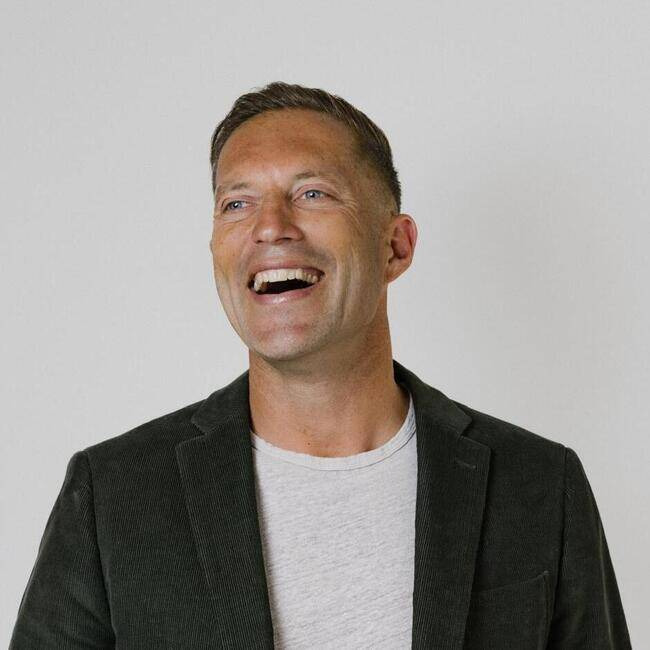If you want to lead the next generation of management, start here.

Bruce Tulgan
Founder of RainmakerThinking, Inc. and Top Expert on Leadership Development and Generational Issues in the Workplace
Featured Topics
Fee Range
$15,000Travels From
New Haven, CT, US
Bruce Tulgan
Biography
Bruce Tulgan is an adviser to business leaders all over the world and a sought-after keynote speaker and seminar leader. He is the founder and CEO of RainmakerThinking, Inc., a management research and training firm, as well as RainmakerLearning, an online training resource. Bruce is the best-selling author of numerous books including Not Everyone Gets a Trophy (Revised & Updated, 2016), Bridging the Soft Skills Gap (Revised & Updated 2022), The 27 Challenges Managers Face (2014), and It’s Okay to be the Boss (Revised & Updated, 2014). His newest book, The Art of Being Indispensable at Work, is available now from Harvard Business Review Press.
Bruce lectures at the Yale Graduate School of Management, as well as other academic institutions. He has written for the New York Times,
the Harvard Business Review, HR Magazine, and writes regularly for Training Magazine, Forbes.com, and Psychology Today.
Since 1995, Bruce has worked with tens of thousands of leaders and managers in hundreds of organizations. In recent years, Bruce was named by Management Today as one of the few contemporary figures to stand out as a “management guru” and he was named to the 2009 Thinkers50 Rising Star list. On August 13, 2009, Bruce was honored to accept Toastmasters International’s most prestigious honor, the Golden Gavel. Bruce is a lifelong practitioner of Okinawan Uechi Ryu Karate Do and holds a seventh degree black belt, making him a Kyoshi master in that style. He lives in New Haven, CT with his wife Debby Applegate, Ph.D., who won the 2007 Pulitzer Prize for Biography for her book The Most Famous Man in America: The Biography of Henry Ward Beecher (Doubleday, 2006). Her new book, Madam: The Biography of Polly Adler, Icon of the Jazz Age, is available now from Doubleday.
Bruce Tulgan
Featured Videos
Current: 2025 Speaking Reel
More Videos From Bruce Tulgan
Bruce Tulgan
Featured Keynote Programs
It’s Okay to Be the Boss---Back to Fundamentals Leadership
Most managers simply don't practice the fundamentals of leadership on a regular, consistent basis, and the costs can be monumental. Bruce shares our decades of research about what gets in the way for so many leaders and managers and how to tackle the most common challenges managers face. Get past the seven greatest myths about leadership and learn eight steps back to the fundamentals of high structure, high substance management communication.
The Great Generational Shift---The Workforce Is Changing, Are You Ready?
Bruce shares our decades of research about what makes generational difference in the workforce so uniquely challenging today: First, there is the numbers problem facing employers, which means that skilled workers will be in greater demand than supply for the foreseeable future. Second, there is a profound change in norms and values and expectations in the emerging workforce, and the new short-term transactional mindset. Third, we are all living through the most profound changes in work since the industrial revolution. Learn cutting edge best practices for optimizing generational diversity in your organization and managing workers at every point on the generational spectrum.
Winning the Talent Wars---Recruiting and Retaining the New Workforce
With skilled talent in greater demand than supply for the foreseeable future, it is more challenging today than ever before to recruit, manage and retain the best talent in nearly every industry. Bruce shares our decades of research: What are today's workers really looking for in a job? What are the top causes of early voluntary turnover? What are the top causes of turnover for mid-level employees? Learn our six-step process for gaining strategic advantage as an employer in today's competition for skilled talent.
Back-To-Fundamentals Collaboration--The Peculiar Mathematics of Real Influence
How do you get things done in working relationships where there are no clear lines of authority? In today's interdependent matrixed organizations, most employees no longer answer only to their immediate boss. Rather, we are all fielding requests from---and relying upon---lateral and diagonal colleagues from all over the organization chart. No wonder we are all feeling so overcommitted. And no wonder things too often slip through the cracks, leading to unnecessary delays, errors, and relationship friction. In this environment, how do the most effective go-to people break through? Bruce shares our decades of research: Learn how to build real influence, practice extreme alignment, get more of the right things done, and beat overcommitment syndrome.
Bruce Tulgan
Featured Books

Not Everyone Gets a Trophy
by Bruce Tulgan
Not Everyone Gets a Trophy: How to Manage the Millennials provides employers with a workable game plan for turning Millennials into the stellar workforce they have the potential to be. The culmination of over two decades of research, this book provides employers with a practical framework for engaging, developing, and retaining the new generation of employees. This new revised and updated edition expands the discussion to include the new 'second-wave' Millennials, those Tulgan refers to as 'Generation Z, ' and explores the ways in which these methods and tactics are becoming increasingly critical in the face of the profoundly changing global workforce.
Baby Boomers are aging out and the newest generation is flowing in. Savvy employers are proactively harnessing the talent and potential these younger workers bring to the table. This book shows how to become a savvy employer and. . .
- Understand the generational shift occurring in the workplace
- Recruit, motivate, engage, and retain the newest new young workforce
- Discover best practices through proven strategies, case studies, and step-by-step instructions
- Explore new research on the second-wave Millennials ('Generation Z') as well as continuing research on the first-wave Millennials ('Generation Y')
- Teach Millennials how to manage themselves, help their managers manage them, and how to become new leaders themselves
It's not your imagination--Millennial workers are different, but that difference is shaped by the same forces that make potentially exceptional workers. Employers who can engage Millennials' passion and loyalty have great things ahead. Not Everyone Gets a Trophy is your handbook for building the next great workforce.

Bridging the Soft Skills Gap
by Bruce Tulgan
The number one challenge with today's young talent is a problem hiding in plain sight: the ever-widening soft skills gap. Today's new, young workforce has so much to offer--new technical skills, new ideas, new perspective, new energy. Yet too many of them are held back because of their weak soft skills.
Soft skills may be harder to define and measure than hard skills, but they are just as critical. People get hired because of their hard skills but get fired because of their soft skills.
Setting a good example or simply telling young workers they need to improve isn't enough, nor is scolding them or pointing out their failings in an annual review. However you can teach the missing basics to today's young talent.
Based on more than twenty years of research, Bruce Tulgan, renowned expert on the millennial workforce, offers concrete solutions to help managers teach the missing basics of professionalism, critical thinking, and followership--complete with ninety-two step-by-step lesson plans designed to be highly flexible and easy to use.
Tulgan's research and proven approach has show that the key to teaching young people the missing soft skills lies in breaking down critical soft skills into their component parts, concentrating on one small component at a time, with the help of a teaching-style manager. Almost all of the exercises can be done in less than an hour within a team meeting or an extended one-on-one. The exercises are easily modified and customized and can be used as take-home exercises for any individual or group, to guide one-on-one discussions with direct-reports and in the classroom as written exercises or group discussions.
Managers--and their young employees--will find themselves returning to their favorite exercises over and over again. One exercise at a time, managers will build up the most important soft skills of their new, young talent. These critical soft skills can make the difference between mediocre and good, between good and great, between great and one of a kind.

Its Okay to Manage Your Boss
by Bruce Tulgan
Get what you need from your boss
In this follow-up to the bestselling It's Okay to Be the Boss, Bruce Tulgan argues that as managers demand more and more from their employees, they are also providing them with less guidance than ever before. Since the number one factor in employee success is the relationship between employees and their immediate managers, employees need to take greater responsibility for getting the most out of that relationship. Drawing on years of experience training managers and employees, Tulgan reveals the four essential things employees should get from their bosses to guarantee success at work.
- Shows employees how to ask for what they need to succeed in their high-pressure jobs
- Shatters previously held beliefs about how employees should manage up
- Outlines what employees must get from their managers: clear expectations; the skills needed to perform their jobs; honest feedback, recognition or rewards
A novel approach to managing up, It's Okay to Manage Your Boss is an invaluable resource for employees who want to work more effectively with their managers.

The 27 Challenges Managers Face: Step-by-Step Solutions to (Nearly) All of Your Management Problems
by Bruce Tulgan
For more than twenty years, management expert Bruce Tulgan has been asking, “What are the most difficult challenges you face when it comes to managing people?”
Regardless of industry or job title, managers cite the same core issues—27 recurring challenges: the superstar whom the manager is afraid of losing, the slacker whom the manager cannot figure out how to motivate, the one with an attitude problem, and the two who cannot get along, to name just a few.
It turns out that when things are going wrong in a management relationship, the common denominator is almost always unstructured, low substance, hit-or-miss communication.
The real problem is that most managers are “managing on autopilot” without even realizing it—until something goes wrong. And if you are managing on autopilot, then something almost always does.
The 27 Challenges Managers Face shows exactly how to break the vicious cycle and gain control of management relationships. No matter what the issue, Tulgan shows that the fundamentals are all you need. The very best managers hold ongoing one-on-one conversations that make expectations clear, track performance, offer feedback, and hold people accountable.
For every workplace problem—even the most awkward and difficult—The 27 Challenges Managers Face shows how to tailor conversations to solve situations familiar to every manager. Tulgan offers clear approaches for turning around bad attitudes, reducing friction and conflict, improving low performers, retaining top performers, and even addressing your own personal burnout.
The 27 Challenges Managers Face is an indispensable resource for managers at all levels, one anyone managing anyone will want to keep on hand. One challenge at a time, you’ll see how the most effective managers use the fundamentals of management to proactively resolve (nearly) any problem a manager could face.



















